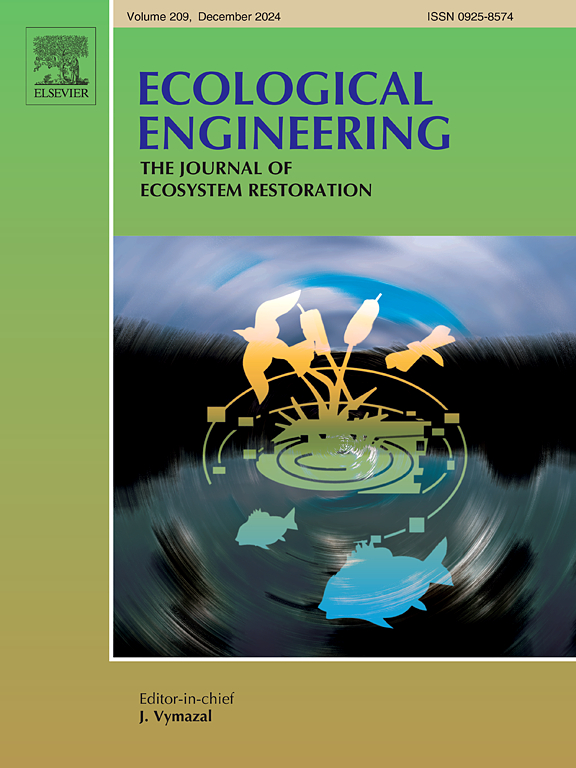The construction of green walls for treating actual laundry wastewater
IF 4.1
2区 环境科学与生态学
Q1 ECOLOGY
引用次数: 0
Abstract
Surfactants, particularly sodium dodecyl benzene sulfonate (SDBS), are the main pollutants found in laundry wastewater. This paper presents a low-energy, low-maintenance technology for treating laundry wastewater: a Green Wall (GW) system that utilizes plants growing on the facade of a building. Experiments conducted with various plants and substrates identified Iris tectorum f. alba, lettuce, and Epipremnum aureum as suitable plants for the GW landscape. For substrates, expanded clay and perlite are recommended. The purification effectiveness of the GW on actual laundry wastewater was investigated under different influent concentrations and hydraulic loads. The removal efficiencies of various substrates and plants for the pollutants in laundry wastewater were also monitored. Results indicated that, in the GW system watering twice a day for 1 h and 15 min each time, and with a surface hydraulic load of 144 L/(m2·h), the removal percentages of SDBS, total organic carbon (TOC), and total nitrogen (TN) from the actual laundry wastewater were approximately 85 %, 75 %, and 76 %, respectively, after 2 days circular process. This study suggests that innovative and aesthetically pleasing ecological GWs can be effectively designed for treating laundry wastewater at household and dormitory scales.
处理实际洗衣废水的绿墙建设
表面活性剂,特别是十二烷基苯磺酸钠(SDBS)是洗衣废水中的主要污染物。本文介绍了一种低能耗、低维护的洗衣废水处理技术:利用建筑立面上生长的植物的绿色墙(GW)系统。用不同植物和基质进行的实验表明,鸢尾、莴苣和金菖蒲是适合GW景观的植物。对于基材,建议使用膨胀粘土和珍珠岩。研究了不同进水浓度和水力负荷下GW对实际洗衣废水的净化效果。考察了不同基质和植物对洗衣废水中污染物的去除效果。结果表明,在GW系统每天2次、每次1 h、15 min、表面水力负荷为144 L/(m2·h)的条件下,循环处理2 d后,实际洗衣废水中SDBS、总有机碳(TOC)和总氮(TN)的去除率分别约为85%、75%和76%。本研究表明,创新且美观的生态gw可以有效地设计用于处理家庭和宿舍尺度的洗衣废水。
本文章由计算机程序翻译,如有差异,请以英文原文为准。
求助全文
约1分钟内获得全文
求助全文
来源期刊

Ecological Engineering
环境科学-工程:环境
CiteScore
8.00
自引率
5.30%
发文量
293
审稿时长
57 days
期刊介绍:
Ecological engineering has been defined as the design of ecosystems for the mutual benefit of humans and nature. The journal is meant for ecologists who, because of their research interests or occupation, are involved in designing, monitoring, or restoring ecosystems, and can serve as a bridge between ecologists and engineers.
Specific topics covered in the journal include: habitat reconstruction; ecotechnology; synthetic ecology; bioengineering; restoration ecology; ecology conservation; ecosystem rehabilitation; stream and river restoration; reclamation ecology; non-renewable resource conservation. Descriptions of specific applications of ecological engineering are acceptable only when situated within context of adding novelty to current research and emphasizing ecosystem restoration. We do not accept purely descriptive reports on ecosystem structures (such as vegetation surveys), purely physical assessment of materials that can be used for ecological restoration, small-model studies carried out in the laboratory or greenhouse with artificial (waste)water or crop studies, or case studies on conventional wastewater treatment and eutrophication that do not offer an ecosystem restoration approach within the paper.
 求助内容:
求助内容: 应助结果提醒方式:
应助结果提醒方式:


